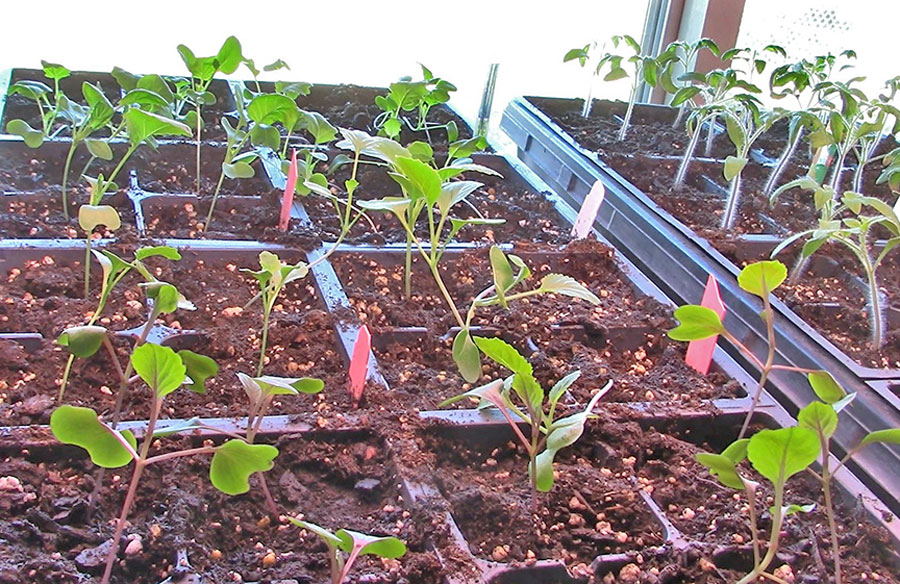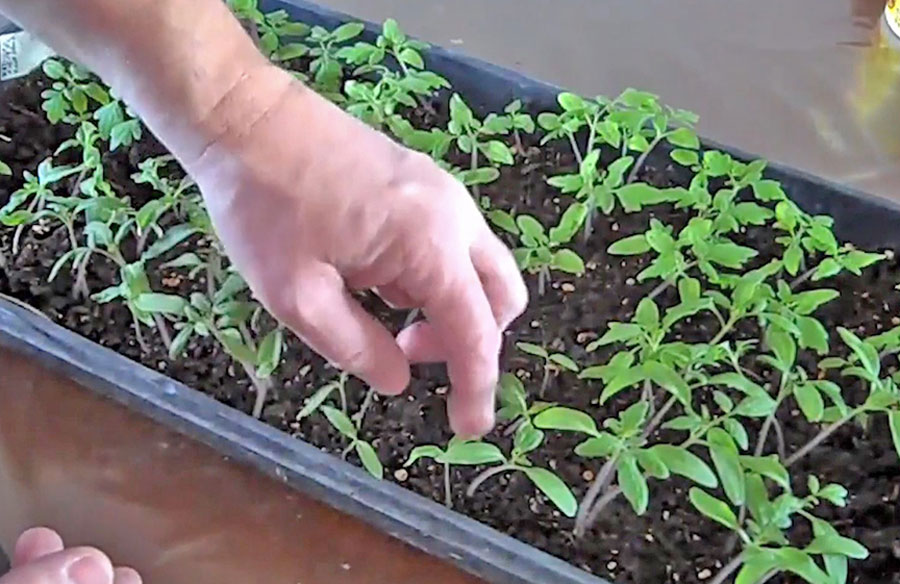Starting vegetable seeds indoors
Published at | Updated atThis article was originally published on Feb. 20, 2022.
There are many reason for starting your own vegetable seeds. Mine are that I enjoy it and most of the cultivars I grow are difficult to find locally. Sometimes it is to get the most out of our short growing season.
Some vegetables are best to start indoors to help get a jump on the season—tomatoes, peppers, okra, eggplant, celery, Brussels sprouts, cabbage, broccoli, cauliflower. Many do just as well when direct-sown, and others just don’t transplant well—sweet corn, beans, peas, radishes, carrots, beets, turnips, parsnips, rutabaga. Some do fine either way—squash, cucumbers, melons, spinach, lettuce, chard, onions, kohlrabi.
If you want to start your own seedlings you need to think ahead. There are several things that should be considered:
- Timing
- Light source
- Materials
- Technique

Timing
Several factors play into timing. The biggest being, when will you plant your transplants outside? This is dependent on plant hardiness and how well you can protect tender plants from frost and wind (topic for a later date). Here are some general guidelines on how many weeks before planting outside you should start your seedlings inside:
- Onions — 10 to 12 weeks
- Celery — 10 to 12 weeks
- Eggplant — 10 weeks
- Peppers — 8 to 10 weeks
- Okra — 8 to 10 weeks
- Tomatoes — 6 weeks
- Melons — 5 to 6 weeks
- Cabbage, broccoli, cauliflower, kohlrabi — 4 to 5 weeks
- Spinach — 4 to 5 weeks
- Swiss chard — 4 to 5 weeks
- Squash, pumpkins, cucumbers — 4 weeks
- Lettuce — 4 weeks
These times can be fine-tuned as you gain experience in your personal growing practices.

Light
The general rule of thumb for light is that vegetable plants require at least 6 hours of direct sunlight each day, and close to the window is not direct sunlight. That’s why many gardeners build a seed-starting stand for supplemental lighting. LED or florescent lights do very well and they don’t produce much heat. Incandescent lights are too hot. The expensive, colored grow-lights are not necessary. A white light covers the full spectrum and does fine. Supplemental lights should be maintained about 6 inches above the plants.
Materials
Your potting soil should be a fine mix so there is good seed-to-soil contact. It can be an all-organic mix, or it may have perlite, sand and/or vermiculite as well. Do not use soil from the garden.
Trays and pots must have drainage. You don’t have to purchase the expensive tray inserts. Cheap, plastic, four-ounce drinking cups with holes notched out of the bottom corner do just as well. I personally do not like the peat pots or peat pellets. These products create a barrier that make it difficult for roots to bypass.

Technique
I have the best success starting small-seeded plants in flats, then transplanting them into pots. This also saves space under your grow lights in early spring when everything needs to be indoors. Large-seeded plants, such as cucumber and larger, do fine when started in small pots. When handling plants avoid grabbing them by the stem. Hold them by a leaf instead.
Click here for a UI Extension video on starting seeds indoors.
Click here for the UI Extension “Spring vegetable planting guide for Idaho”.
Have fun starting some of your own plants this spring.

In the Garden is sponsored by ProPeat, which is dedicated to delivering solutions for any of your professional fertilization needs. Whether you need to reduce the harm to soils and the environment, or you're interested in the latest nitrogen, carbon and biochemical technologies, ProPeat is the perfect fit.


